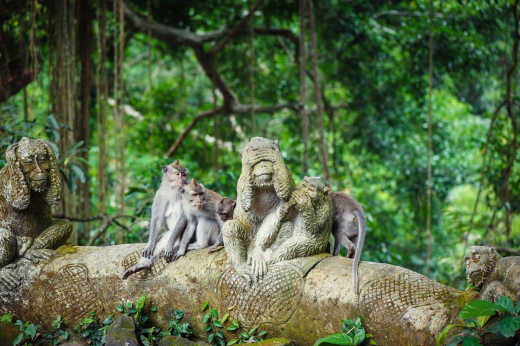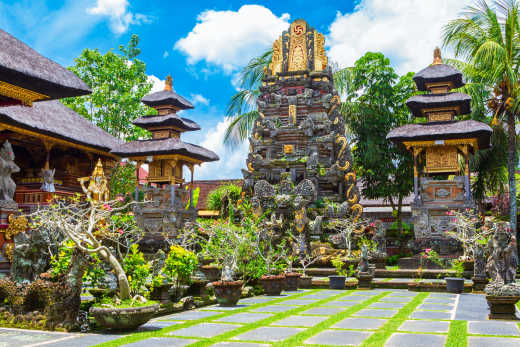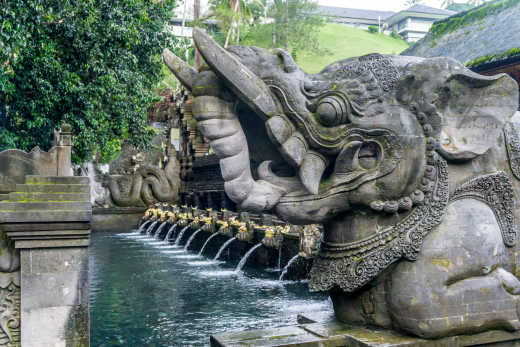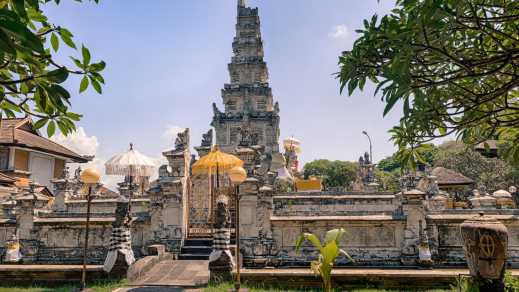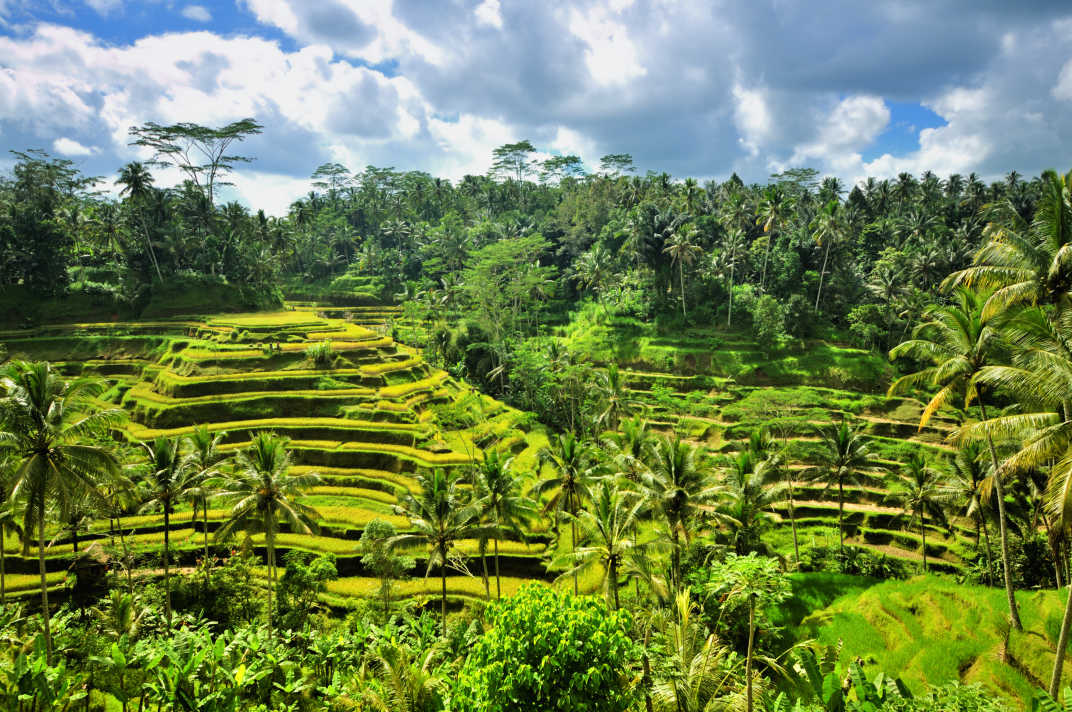
Ubud trip
The top sights, highlights, tours & travel itinaries curated by our Travel Experts.
Our Expert Tips for Your Ubud Tour
Ubud is the cultural and artistic centre of Bali. Local and international artists find a constant source of inspiration in the city, which is dominated by temples and shrines. Ubud is lively, dreamy and serene at the same time. Festivals, dances and art exhibitions take place here almost daily. Enjoy the colourful stalls at the Ubud market and start an excursion through the lush green landscape ten minutes later - you can't get more variety than that!
![ASien Bali Ubud Sacred Monkey Forest Sanctuary Ubud Sacred Monkey Forest Sanctuary]()
Sacred Monkey Forest Sanctuary
A truly magical world
![Asia Bali Ubud Saraswati Temple Bali Ubud Saraswati Temple]()
Saraswati Temple
A mixture of temples, gardens and ponds
![Asia Bali Ubud Pura Tirta Empul Bali Ubud Pura Tirta Empul]()
Pura Tirta Empul
Known for its holy spring water
What to See During Your Ubud Tour?
1. Sacred Monkey Forest Sanctuary
It's a magical world that you will immerse yourself in at the Sacred Monkey Forest Sanctuary: The sacred monkey forest measures just over one hectare, but offers a wealth of things to see and experience. In the densely wooded sanctuary there are several temples like the Pura Dalem Agung Padangtegal and a holy spring. But the real stars are the cute Javanese monkeys. Almost 800 of them call the forests their home. On your walk you can buy bananas, papayas and other fruits to feed the monkeys. A unique highlight of your Ubud journey.
2. The Blanco Renaissance Museum
Don Antonio Blanco was one of the most famous artists who ever lived in Bali. Born in Manila, the son of Spanish parents founded his own studio in Ubud. The Blanco Renaissance Museum takes you through the life and artistic work of this eccentric painter. The pompous and extravagantly furnished museum is a mix of Balinese and Catalan architecture. In addition to his masterpieces, unfinished paintings are also on display, still standing on their original easels. Enjoy a walk through the beautiful park or take a private guided tour.
3. Agung Rai Museum of Art
The Agung Rai Museum of Art (ARMA) is dedicated to the preservation and care of contemporary and traditional Balinese art. Opened in 1996, the museum exhibits mainly paintings from the 1930s and 1940s. Among the most famous artists are Ida Bagus Made and I Gusti Nyoman Lempad. But also foreign painters and artists can be found in the beautiful gallery. In addition to the permanent exhibitions, visitors can enjoy special thematic exhibitions and various events such as dance performances and theatre performances.
4. Ubud Palace
The Royal Palace of Ubud is considered the symbol of the city and is also the centre of Ubud's rich cultural heritage. Art markets and exhibitions are held regularly in the gardens and squares of the palace, which is built in the typical Balinese architectural style. During the dance nights, dancers dressed in colourful traditional costumes show their skills in front of the historical palace scenery, while a gamelan orchestra accompanies them musically. Stroll through the grounds and sample the delicious specialities offered in small cafés.
5. Goa Gajah
The caves of Goa Gajah are another sacred place that brings Ubuds mystical character to life. The stone gate, decorated with grimaces, has always been said to ward off evil spirits from the sanctuary. Researchers suspect that the caves, which are decorated with Buddhist and Hindu images, date from the 11th century - but this is not certain. After you have passed the threatening stone gate, a stone staircase, which has not been fortified for a long time, leads to the bath temple of Goa Gajah. The Ganesha statue with the typical elephant's head once positioned here gave the temple its name - "Elephant Cave".
6. Saraswati Temple
A feeling of awe and happiness will seize you when you see the Saraswati Temple for the first time. The impressive sanctuary of temples, gardens and ponds is located in the center of Ubud. Saraswati Temple is still quite young, it dates back to 1951 and most of the Hindu statues and representations were created by the famous artist I Gusti Nyoman Lempad, whose works are exhibited in numerous museums and galleries. The idyllic lotus ponds, where you can linger and relax, are also a real highlight.
7. Campuhan Ridge Walk
From Ubud Market in the city centre it is only one kilometre to Campuhan Ridge Walk, surrounded by emerald green nature. After about ten minutes, you will reach Bukit Campuhan Hill, from where you have a view of the entire area. If you dare, swing onto the panorama swing and whiz through the air directly above the green jungle carpet. If you walk even further, you will come to a sleepy village with cafes and snack bars. For the return trip you should plan about two hours.
8. Pura Tirta Empul
The Hindu water temple Tirta Empul is especially famous for its holy spring water. Each fountain from which water pours into the pool is said to be responsible for healing a particular ailment. On certain days of the Hindu calendar you will see many devout Hindus participating in cleansing blessing ceremonies. You are also invited to participate in these on your Ubud journey! On the hill behind the picturesque complex you can also admire a large modern villa, once built for the visit of President Sukarno. Less
Other Places to Visit During Your Tour
TourlaneCare

